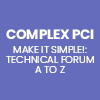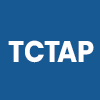Presenter's Information
David Joel Cohen, MD
| Country | USA |
| Specialty | Interventional Cardiologist |
- Cerebral Embolic Protection in TAVR: PROTECTED-TAVR and BHF-PROTECT-TAVI
- Mechanical Circulatory Support in High-Risk PE
- Reducing Infarct Size in STEMI- What Are the Options and Are They Cost-Effective?
- Prediction and Prevention of LVOT Obstruction During TMVR
- Transcatheter Aortic Valve Replacement in Patients With Systolic Heart Failure and Moderate Aortic Stenosis: The TAVR UNLOAD Trial
- [Debate 2025: Use of Cerebral Embolic Protection in Contemporary TAVR Practice] Not Yet: Futility for Stroke Events
- TAVR for Moderate AS and Heart Failure: The TAVR UNLOAD Trial
- Innovation in TAVR: What Can We Expect for the Next Decade?
- Quality of Life Benefits of Tricuspid Valve Therapies - Insights From the TRILUMINATE Trial
- Challenges With Valve-in-Valve TAVR - Role of Bioprosthetic Valve Fracture, Coronary Protection, and Leaflet Modification
- PARTNER 3 Low Risk 5 Year Clinical and Echocardiographic Follow-up
- Novel Drug-Eluting Stent Designs: Not Yet Plateau, Still Need to Go!!!
- Contemporary Best Antiplatelet Strategy in HBR or CHIP Patients: How and What?
- Cost-Effectiveness of TEER - Insights From the COAPT Trial
- Challenges with ViV TAVR - Role of Bioprosthetic Valve Fracture, Coronary Protection, and Leaflet Modification
- Temporal Trends in TAVR Indication and Outcomes - Insights from the US TVT Registry
- Optimal Indication for CEP for TAVR: Insights from the STS-TVR and PROTECTED-TAVR
- Year-In-Review: Transcatheter Valve Therapy
- How Recent Guidelines Will Change the Approach of Mitral Disease Management in the Coming Years
- Left Main Revascularization; Consensus and Gaps in 2023
- Cost-effectiveness of TMVR (MitraClip)- Insights from the COAPT Trial
- Optimal Indication for Cerebral Embolic Protection for TAVR: Insights from the TVT Registry
- TAVR Economics and Efficiencies: Insights from the First Decade
- Economic Outcomes of TAVR vs SAVR for Low-Risk Patients: Results from the PARTNER 3 Trial
- Bioprosthetic Valve Fracture for Optimization of Valve-in-Valve: When, Why, and How?
- Composite Outcomes and Net Adverse Events: Implications for Trial Design and Interpretation
- COVID-19 and RAAS Inhibitors
- Who Should Not Undergo TAVR? Key Insights from the Pivotal Trials and Registries
- Quality of Life Outcomes of Transcatheter Mitral Valve Repair: Insights from the COAPT
- QOL Outcomes of the COAPT Trial
- A Journey of PCSK9 Inhibitors: From Genetics To Clinics
- The Emerging Role of NOACs in the Management of Stable CAD and PAD
- Failing Bioprosthetic Valves: Valve Fracture, Basilica, and Others
- ViV TAVR: The Role of Bioprosthetic Valve Fracture
- Valve-in-Valve: TAVR with BVF(Bioprosthetic Valve Fracture): In-Depth Techniques and Updated Data
- TAVR: Insights from Quality of Life and Economic Evaluation
- Stable CAD & PAD: COMPASS Trial - Will It Change Practice?
- PARTNER 2A and SAPIEN 3 Cost-Effectiveness: Cost-effectiveness of TAVR Versus SAVR in Intermediate Risk Patients with Aortic Stenosis
- Expanding Role of NOAC in PCI/AF, ACS, and Stable ASCVD: Recent Trials and Next Expectations
- Bioprosthetic Valve Fracture for Optimizing the Results of Valve in Valve TAVR
- TAVR: Insights from QOL and Economic Evaluation
- Selecting the Appropriate Patients for Long-term DAPT; Insights from PEGASUS TIMI-54
- ACS and DAPT Duration: Which One and How Long?
- TAVR - Year in Review
- Finding from PARTNER II Quality of Life Data
- What Is the Optimal Duration of DAPT After PCI/DES?
- Bioresorbable Vascular Scaffolds and DAPT Duration: The Longer the Better?
- Selecting the Appropriate Patients for Long-Term DAPT; Insights from Latest Trials
- Extremely High Risk for TAVR - Insights from QOL and Cost-Effectiveness Studies
- Optimizing Antiplatelet Therapy: Balancing Ischemic & Bleeding Risks
- Pretreatment with P2Y12 Inhibitors: When Selective vs. Routine Is Used?
- Cost-Effectiveness and Its Clinical Application
- Cost-Effectiveness of PCI for LM Disease
- Six Months Enough!
- Quality of Life After TAVI: What Do We Know? Why Should You Care?
- Guideline Today: Preload Prior to PCI - Standard of Care
- Early Insights on Cost-effectiveness
- CABG Status 2013: (i) Is Off-pump a Real Option? (ii) Aftermath of FREEDOM Results
- Counterpoint: Resisting the Bioabsorbable DES "Bandwagon": A Healthy Dose of Skepticism
- Why the Adoption of New Agents Is So Low?
- Management Guideline for Ischemic HF
- When Is TAVI Not Cost-effective?
- How to Overcome the Challenges?: New Agents - Prasugrel
- Nuances of Clinical Trials: Trial Size, Power Analysis, Sub Groups
- New Thienopyridine Use in ACS and PCI (TRITON-TIMI 38 and Several Subgroup Analyses, PLATO and Several Subgroup Analyses, and CHAMPION Trials)
- Cost-Effectiveness of Prasugrel vs. Clopidogrel in ACS
- Optimal Dosing of Antiplatelet Therapy in Patients With ACS Undergoing an Early Invasive Strategy: Insight from CURRENT-OASIS7 Trial
- Clopidogrel: Current OASIS7 - Double Is Better !!
- The Nuances of Superiority and Non-Inferiority Trials: Design Considerations, Choice of Endpoints, Cost Effectiveness Analyses
- Randomized Trials vs. Observational Registries: Strengths and Weaknesses
- Structural Heart Disease
- Updated Antiplatelet Therapy After PCI; Prasugrel, AZD6140..;The Future We Can Expect in Routine Practice?



